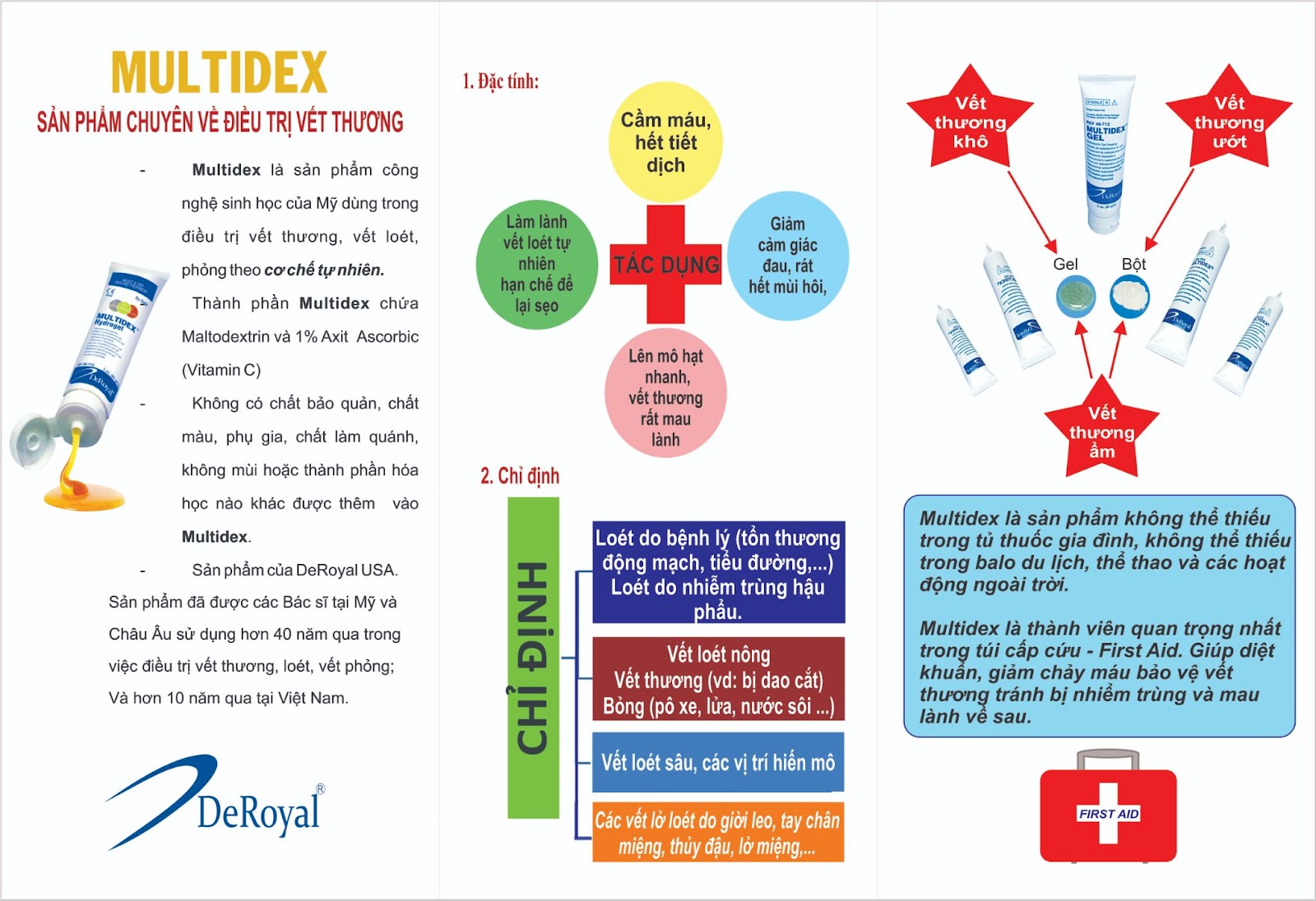In this article, we will cite the research regarding the effectiveness of Maltodextrin and Vitamin C - Main ingredients of Multidex gel - from the scientific article "Topical Wound Treatments and Wound-Care Products" by author Stine Jacobsen , DVM, PhD, Diplomate ECVS.

1. Maltodextrin
Maltodextrin is a d‐glucose polysaccharide. It is available as a powder and as a gel, both of which also contain 1% ascorbic acid (Multodex, DeRoyal). The powder is hydrophilic and is used in moist wounds, where the absorbed fluid turns the powder into a gel, thus providing moist wound healing.
Similar to other sugars, maltodextrin extracts fluid through the wound, thereby cleansing contaminated and infected wounds, reducing swelling, and enhancing the absorption of tenacious exudates. There is limited evidence for its effects on healing tissues, but it may positively affect the chemotaxis of leukocytes, provide substrate (glucose) for cellular metabolism and healing, and induce the formation of granulation tissue. Based on these suggestions, maltodextrin should be used in the early phases of healing (i.e., the inflammatory and proliferative phases), especially in wounds that are contaminated or infected. Studies in humans with recalcitrant wounds or venous leg ulcers have suggested that the application of maltodextrin also accelerates the healing of chronic wounds. Maltodextrin applied to experimental wounds in four horses was suggested to be more effective in reducing pain and swelling and in stimulating healing than nitrofurazone, but the results of the study were not substantiated by statistical analyses.
Maltodextrin is applied to the wound after debridement and irrigation, in a thin layer, or used to fill in cavities and undermined wounds. It should be covered by a dressing.
2. Vitamin C
Vitamin C plays a central role in the synthesis of collagen and other organic components of the intracellular matrix, and the need for vitamin C is increased during the homeostatic and immune responses to accidental and surgical trauma and to infection.